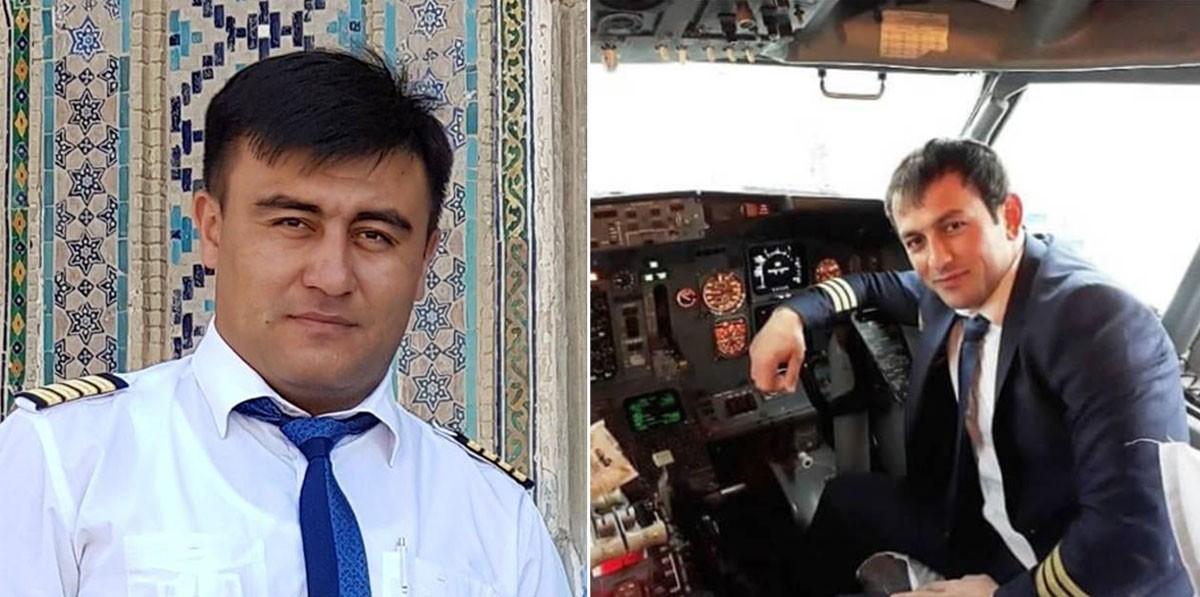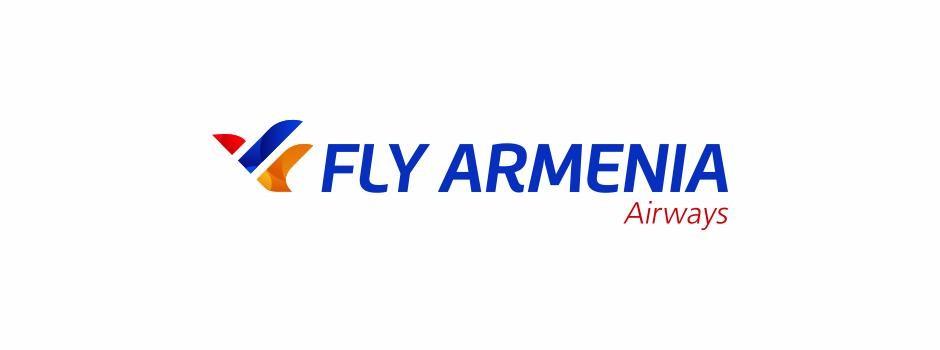
The “Hijacking” of an Armenian Plane: New Details Revealed
Hetq has learned several details about the February 20, 2020 mysterious disappearance of an Armenian plane in Iran that almost turned into an interstate scandal.
Hetq sources reported that the plane was returned to Armenia due to the skillful diplomatic work of the Armenian side. On the other hand, it turns out that the owner of the aircraft and the operating company have disputes, which are probably based on the suspicious actions of the owner.
The Boeing 737-300 aircraft operated by Fly Armenia Airways (Armenian registration: EK-FAA) flew from the Estonian capital Tallinn on February 19, 2020 and illegally appeared in the Iranian capital Tehran on the 20th of the month, and only after a long battle was it transferred to Yerevan's Zvartnots Airport on April 23.
Who were the Tajik pilots?
On March 4, Armenia’s Civil Aviation Committee (CAC) announced that the crew of the aircraft, contrary to prior permission and without observing the destination point of the permit issued by the committee (Ukrainian Gostomel - Hetq), flew to Bulgaria’s Varna Airport and then headed then to Sharjah (UAE), but landed at Iran's Mehrabad Airport. According to the CAC, Fly Armenia Airways also reported that the change of the planned route took place without the consent and knowledge of the company.
The pilots, according to the CAC, were citizens of Tajikistan. Prior to the flight, the Armenian airline applied to the CAC and asked them to validate (recognize) the foreign certificates of those pilots and allow them to make one flight from Tallinn to Gostomel, which was granted by the CAC. As a result, the Tajik pilots first flew the Armenian plane from Tallinn to Varna on February 19 and landed in Tehran the next day.
Hetq has found out who the pilots, who flew the Armenian plane to Iran, were. They are Commander Azizbek Goziev and co-pilot Sarvar Nurov. According to their Facebook pages, they work for Tajik Air, the country's national carrier, which, according to aviation insiders, currently operates only one aircraft. Goziev is from Buston (formerly Chkalovsk) in Tajikistan, Nurov is from Dushanbe, the capital of Tajikistan, and both graduated from the Kyrgyz Aviation Institute (Bishkek).
The owner or leasing company, as we have previously written, is the Swiss company BK Impex AG. (We will discuss this in more detail in another article).
Fly Armenia Airways told Hetq that the aircraft leasing agreement was signed on August 31, 2020. The plane was registered in Armenia’s Aircraft Register on December 30, 2020 as EK-FAA. At the time of the contract signing, the Boeing 737-300 was at the Tallinn airport, at the unit of a local Magnetic MRO service company.
The Armenian airline reported the following to Hetq about future developments.
"According to the contract, the lessor was obliged to carry out all the technical work to bring the plane into a state of airworthiness. After the completion of the mentioned work, the plane was to be transported to Armenia for further operation. Due to the war situation in Armenia and the coronavirus pandemic, the transportation of the plane to Armenia slowed. Simultaneously with the stabilization of the situation, the technical work on the aircraft resumed, and the lessor decided to carry out the rest of the mentioned works at the airport in Gostomel, Ukraine."
When we look closely at what happened next, it seems that the Swiss owner's decision was the first step in a pre-conceived master plan that Fly Armenia Airways was unaware of.
Naturally, to continue the noted work, the plane had to be moved from Tallinn to Gostomel. Fly Armenia Airways had its pilots, but since Estonia is a Schengen area, there was a visa problem. On the other hand, Fly Armenia Airways was informed that a slot (specific period) has already been fixed for maintenance at Gostomel Airport, and if violated the airline would have to make additional payments. Thus, there was a problem of urgency, especially given the coronavirus pandemic and closed borders. In this case, when the Armenian company's own pilots did not have a Schengen visa, the owner BK Impex AG offered the option of Tajik pilots, which was accepted by Fly Armenia Airways. It is difficult to say what would have happened if Armenian pilots had left for Tallin.
It’s worth mentioning that military and defense expert Babak Taghvaee, the author of the Persian-language website of The Independent daily, said, citing a source, that the Iranian Caspian Airlines had ordered this Boeing 737-300 aircraft in the summer of 2020, when the plane was not yet registered in Armenia. It was not in the fleet of Fly Armenia Airways, but was in the fleet of Lithuanian GetJet Airlines and was parked in the capital of Estonia. If this information is correct, it means that the registration of the plane in Armenia was a direct method of transporting it to Iran. According to a Hetq source, the key players in this were the Swiss seller and the Iranian buyer.
Returning to the involvement of the Tajik pilots, it should be noted that Fly Armenia Airways appealed to the CAC to recognize the Tajik certificates of Goziev and Nurov, candidates nominated by the Swiss owner, and allow them to make one Tallinn-Gostomel flight, which the committee did.
What happened afterwards was that the pilots, with the help of some unknown documents, were able to fly from Tallinn to Varna, spend the night there, and then, on February 20, flew over Turkey to Iran and landed in Tehran. It should be recalled that on February 25, Armenia’s National Security Service (NSS) initiated a criminal case of hijacking a plane and falsifying document. The NSS seized the Boeing 737-300 plane transported from Tehran to Yerevan's Zvartnots Airport on April 23.
How did the plane "escape" to Iran?
Interestingly, the Tallinn-Gostomel flight, with the permission of the CAC, was scheduled for February 12-22, and the plane took off from Tallinn on Friday February 19 and landed in Tehran on Saturday, a non-workday. The impression is that the people who transferred the plane wanted to gain as much time as possible through the weekend so that the news would reach Armenia later.
Here is what Fly Armenia Airways told Hetq.
"On February 19, without a flight plan approved in advance by the airline, the company was informed that the plane had landed at Gostomel airport. On the morning of February 20, contacting Gostomel Airport, where the plane was scheduled to land, it became known that the latter had not arrived there. The airline then contacted Tallinn Airport, during which it became clear that the plane had flown from Tallinn in another direction. Then, as a company investigation revealed, the plane had already reached the Varna airport, after which the airline immediately informed Armenian law enforcement bodies and the Civil Aviation Committee with a request to take immediate action, which it was denied by the CAC. The airline also applied to EUROCONTROL and aviation agencies of several countries demanding that necessary steps be taken. The airline managed to find the location of the plane on its own and take control of it. Thanks to the joint efforts of the Armenia’s NSS and the Ministry of Foreign Affairs, represented by the RA Embassy in the Islamic Republic of Iran, the plane was returned to Armenia on April 23."
According to Fly Armenia Airways, the U.S. Embassy in Armenia praised the airline's contribution in the return of the aircraft. Accordingly, as the carrier notes, due to its actions, Armenia is no longer considered a favorable transit point for transporting planes to Iran.
"The airline has suffered as a result of that criminal activity and has provided all the necessary information and documents to the preliminary investigation body. The company hopes that all the culprits will be identified and brought to justice," Fly Armenia Airways told Hetq.
The Armenian Embassy in Iran insisted that the plane be returned
Hetq sources claim that the Armenian Embassy in Iran played a significant role in returning the plane from Iran. They say the embassy was in contact with top Iranian officials and asserted Armenia’s position that the plane must be returned.
It is true that some important parts were removed from the plane in Tehran. They were replaced and the plane managed to fly to Yerevan. Cooperation between Armenian and Iranian specialists to bring the plane back into service also occurred.
A Hetq source, however, reported that the plane’s Swiss owner, BK Impex AG, prohibited the Estonian service provider Magnetic MRO to transfer technical documents of the plane to Fly Armenia Airways, which, like the other steps taken by the lessor, raises suspicions.
Top photo: Azizbek Goziev and Sarvar Nurov
 Videos
Videos Photos
Photos

Write a comment